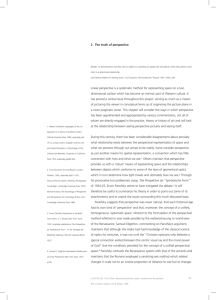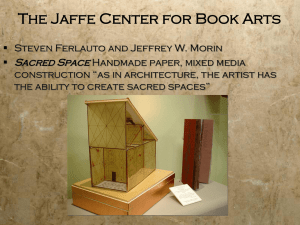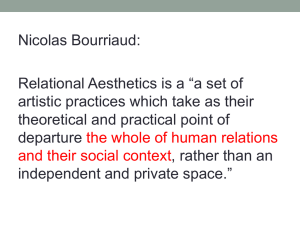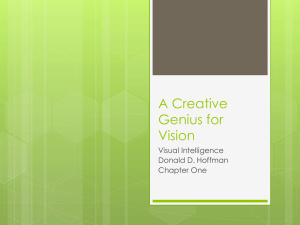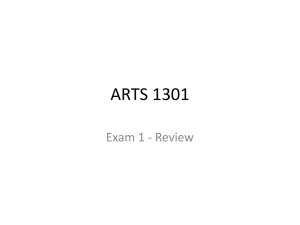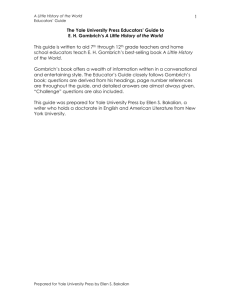Art and Illusion
advertisement
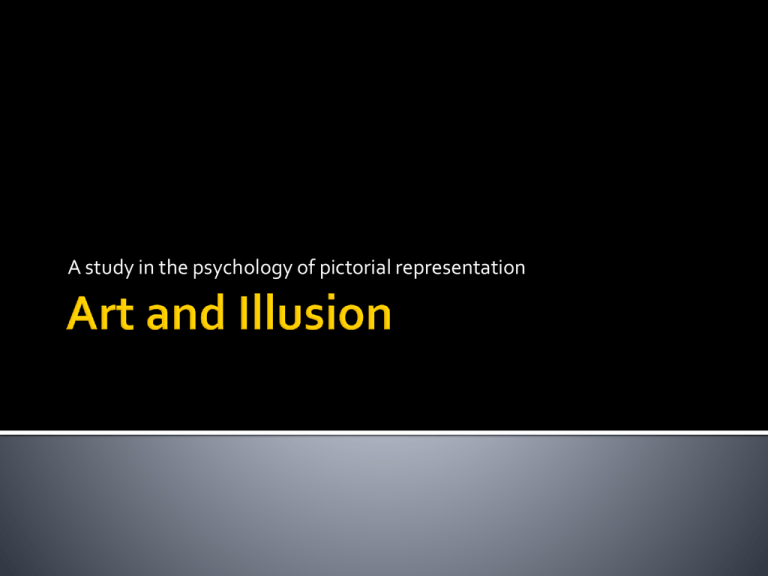
A study in the psychology of pictorial representation Born 1909, Vienna Died 2001, Somewhere in Britain Born into a sophisticated family, with close connections to Gustav Mahler, Sigmund Freud et al Studied at the University of Vienna ”Had a gift for explaining art to young people” Fled to Britain in 1936, became research assistant at the Warburg Institute (now a part of University of London) ”Story of Art” published in 1950, famously saying ”There really is no such thing as art. There are only artists.” Little sympathy for modern art, did not explore non-Western art ”Art and Illusion” published in 1960, based on a lecture series given in Washington in 1956 The rest is history... ”Art and Illusion” divided into 4 parts Each part covering a different part of the spectrum of art (artist, viewer, creation, percerption) Asks question ”Why is everything created differently everywhere?” References to the psychology of association, projection, gestalt and perception Gombrich asks, ”Why is it that different ages and different nations have represented the visible world in such different ways?” Gombrich explains how association works (cat example) ”Painting is science”, both in creation and appreciation Preface of schema: Light representation A picture can never be ”true” or ”false”, only the caption can be judged The Schema: ”The first approximate, loose category which is gradually tightened to fit the form it is to reproduce” i.e., painting knowledge is accumulated and built upon in a society ”You cannot create a faithful image out of nothing.” The artist is more likely to see what he/she paints, rather than paint what he/she sees. The artist’s aim is not to make likeness, but to create something real ”chairness” (example) Greek art, still to lifelike: Gombrich takes this as proof for that a culture takes a schemata (”canon”) and improves upon it Basic geometric relationships, primitive perspective Gombrich refers to medieval ”drawing books”, filled with schematas; Gombrich compares them to basic vocabularies It would be possible to portray with them, but ”effective portrayal” is only possible if the artist goes beyond the basics Gombrich describes the psychological phenomenon of projection, and asserts that this happens for works of art too It is not the artist that projects, but the beholder (viewer), while the artist merely creates Gombrich stresses that both are equally important in the creation of meaning Gombrich explains that knowledge and experiences add onto what see or hear Sometimes we can choose to not listen purely by the choice of words of another person Projection thus becomes perception For this same reason our minds can string together pieces of art or narrative even if pieces are missing Artists can never represent every detail of reality Thus, art becomes an illusion, where the beholder fills in the blanks Artworks become iconic, ”etc. Principle” Gombrich also tackles the problem of three dimensions in a painting: perspective Gombrich argues that perspective is an equation that wants the image to appear like the object, and the object like the image Perspective is dependent on the beholder’s expectations, specifically the size-distance ambiguity Gombrich challenges gestalt psychology in saying that perspective is learned and not innate Gombrich uses the example of the popularity of cubism as proof, since it ”stamps out ambiguity and enforces one reading of a picture – that of a colored canvas” Gombrich makes a note on the history of perception It has taken us from neolithic times to the nineteenth century to paint what we see as what it is Gombrich argues that ”all thinking is sorting, classifying.” Gombrich opposes John Ruskin’s ”innocence of the eye”, saying that no human eye can be ”innocent” (i.e., unaffected by experience or attitude) A painting owes more to other paintings than it does to direct observation Tying in from the first part, Gombrich expands upon ”the painter sees what he paints” with experimentation ”Only experimentation can show the artist a way out of the prison of style toward a greater truth” Pure observation isn’t possible in neither science nor art All observation is predicated by hypotheses ‘‘The true miracle of the language of art is not that it enables the artist to create the illusion of reality. It is that under the hands of a great master the image becomes translucent.’’

